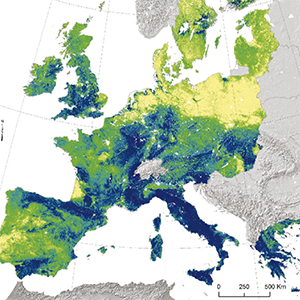Insight on the application of graphene to sandy soils to improve water holding capacity

All claims expressed in this article are solely those of the authors and do not necessarily represent those of their affiliated organizations, or those of the publisher, the editors and the reviewers. Any product that may be evaluated in this article or claim that may be made by its manufacturer is not guaranteed or endorsed by the publisher.
Authors
In this study, the changes in relevant hydraulic parameters (namely hydraulic conductivity, total and effective porosity, specific retention, and longitudinal dispersivity) induced by the introduction of graphene in a calcareous sandy soil and a siliciclastic riverine soil were monitored and modelled via leaching column experiments. Constant pressure head tests were used to calculate the hydraulic conductivity of each column, while leaching experiments were run to estimate total porosity and specific retention, and for each treatment three replicates were done. Columns were then run under saturated conditions via a low flow peristaltic pump and monitored for chloride concentrations. CXTFIT 2.0 was employed to inversely model the column experiments and retrieve effective porosity and longitudinal dispersivity. Results highlighted small changes of hydraulic conductivity and porosity, induced by graphene addition for both soils. A marked increase of specific retention values was instead recorded in the amended columns respect to control ones. Chloride breakthrough curves modelling showed that graphene doubled dispersivity in the calcareous sandy soil compared to the control, while it halved dispersivity in the siliciclastic riverine soil with respect to the control. The results highlight that graphene induces positive shift in the capacity of sandy soil to retain porewater but at the same time it also alters solute transport parameters, like dispersivity, suggesting that further studies need to focus on using several exposure concentrations, durations and mode of exposure, and apply simulated field conditions or perform experiments in real field conditions, to understand the fate of unwanted compound in soils amended with graphene.
How to Cite

This work is licensed under a Creative Commons Attribution-NonCommercial 4.0 International License.
PAGEPress has chosen to apply the Creative Commons Attribution NonCommercial 4.0 International License (CC BY-NC 4.0) to all manuscripts to be published.














